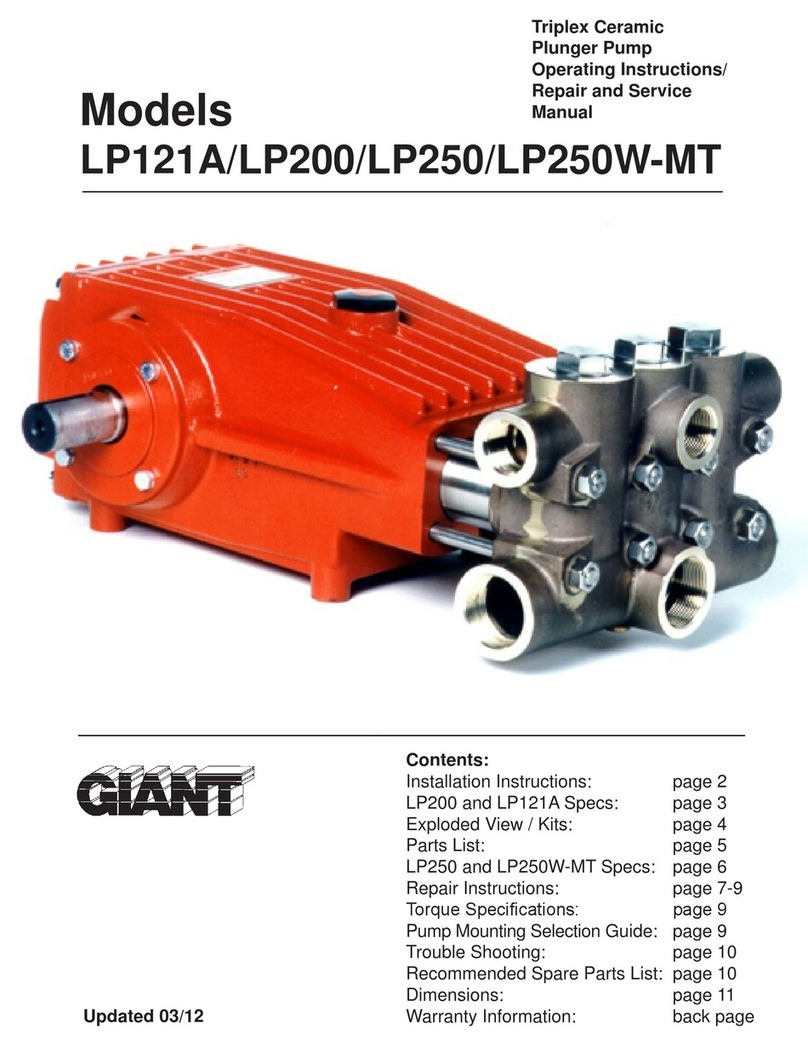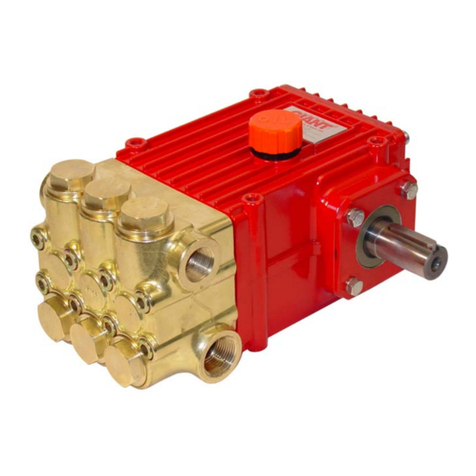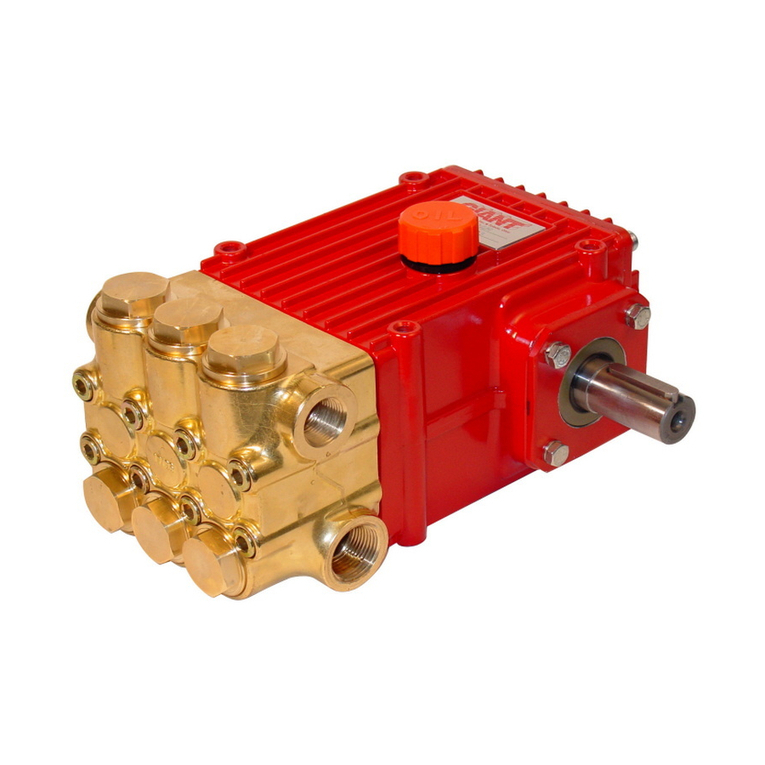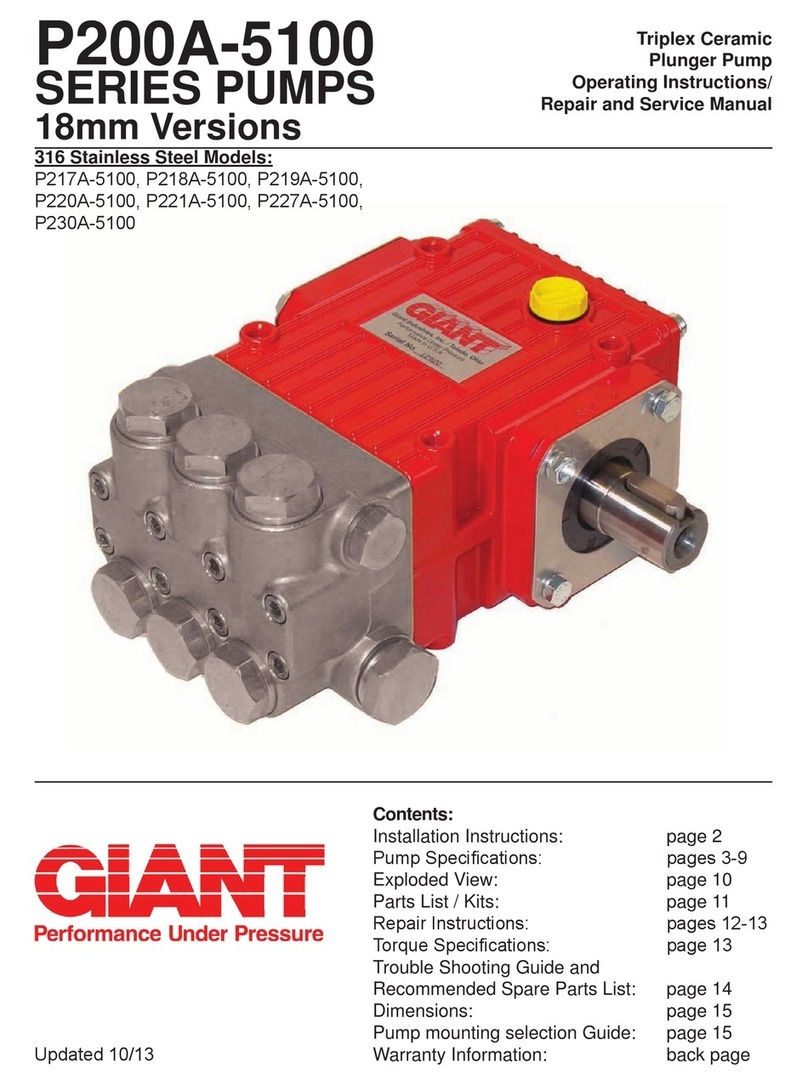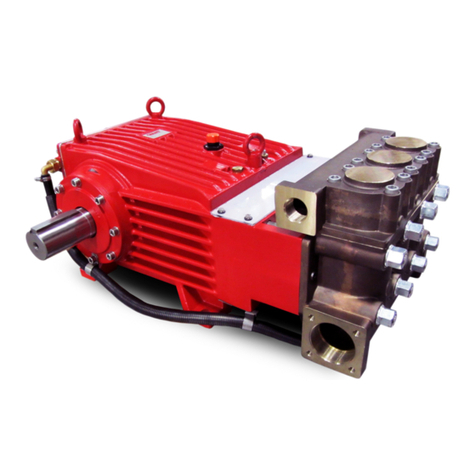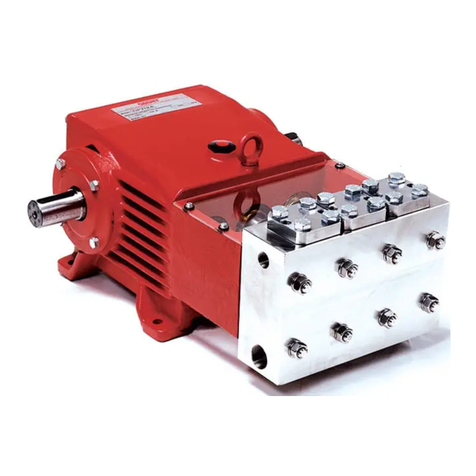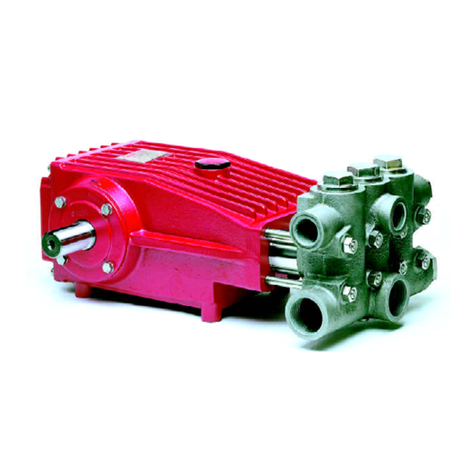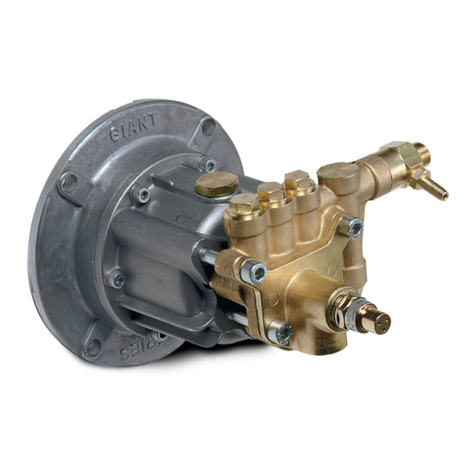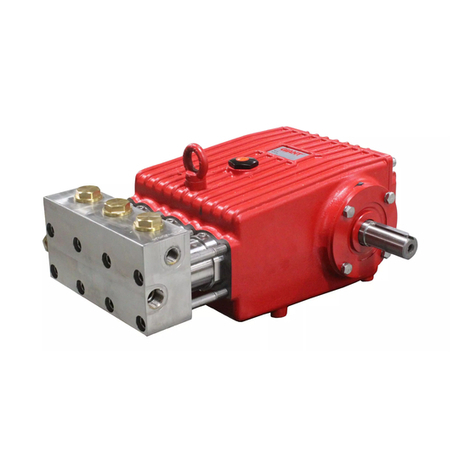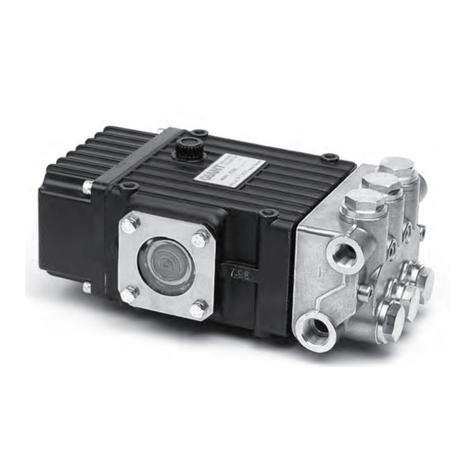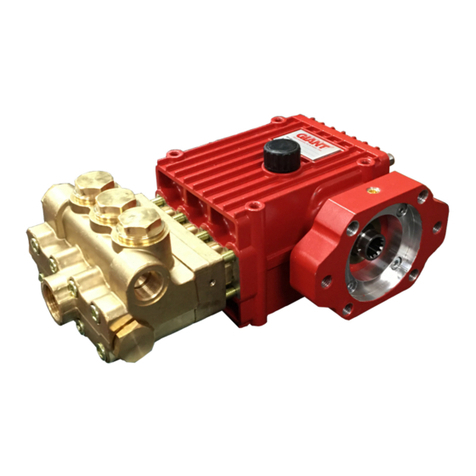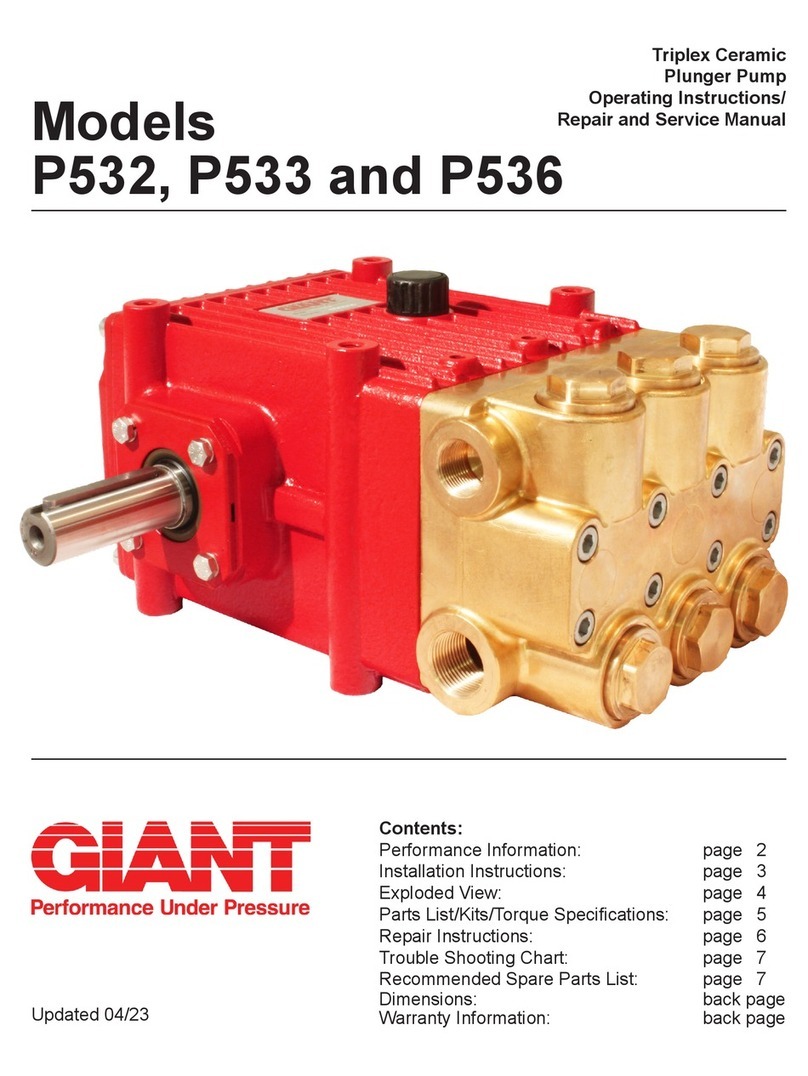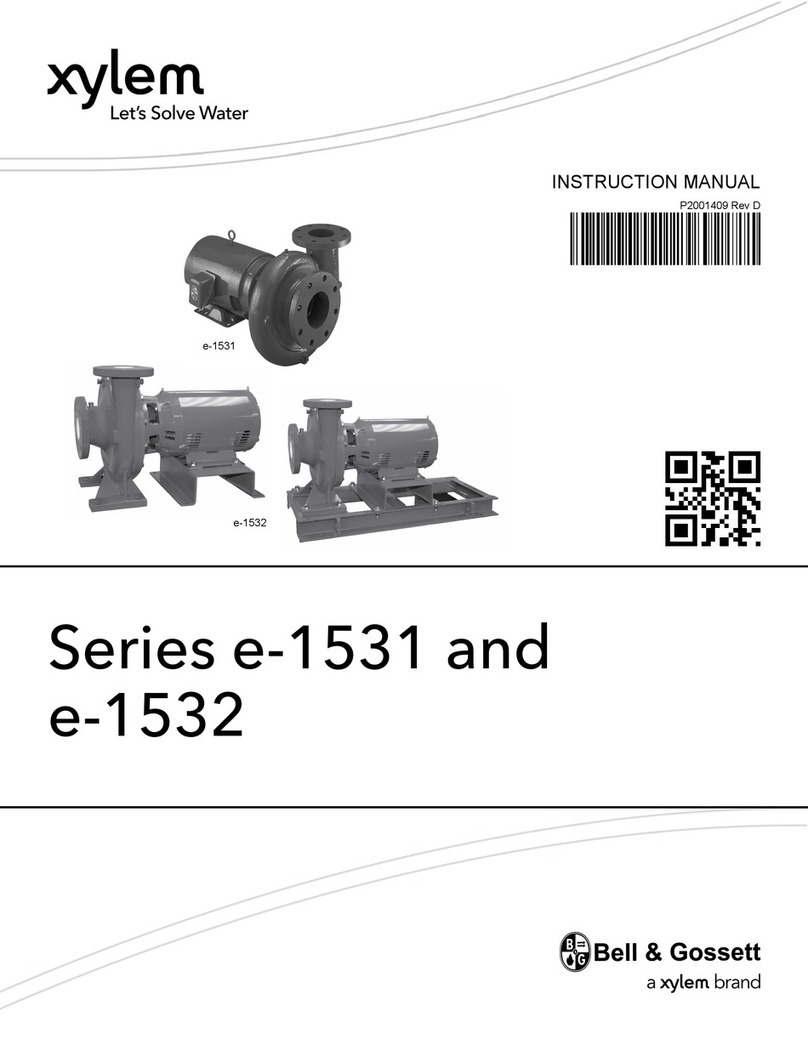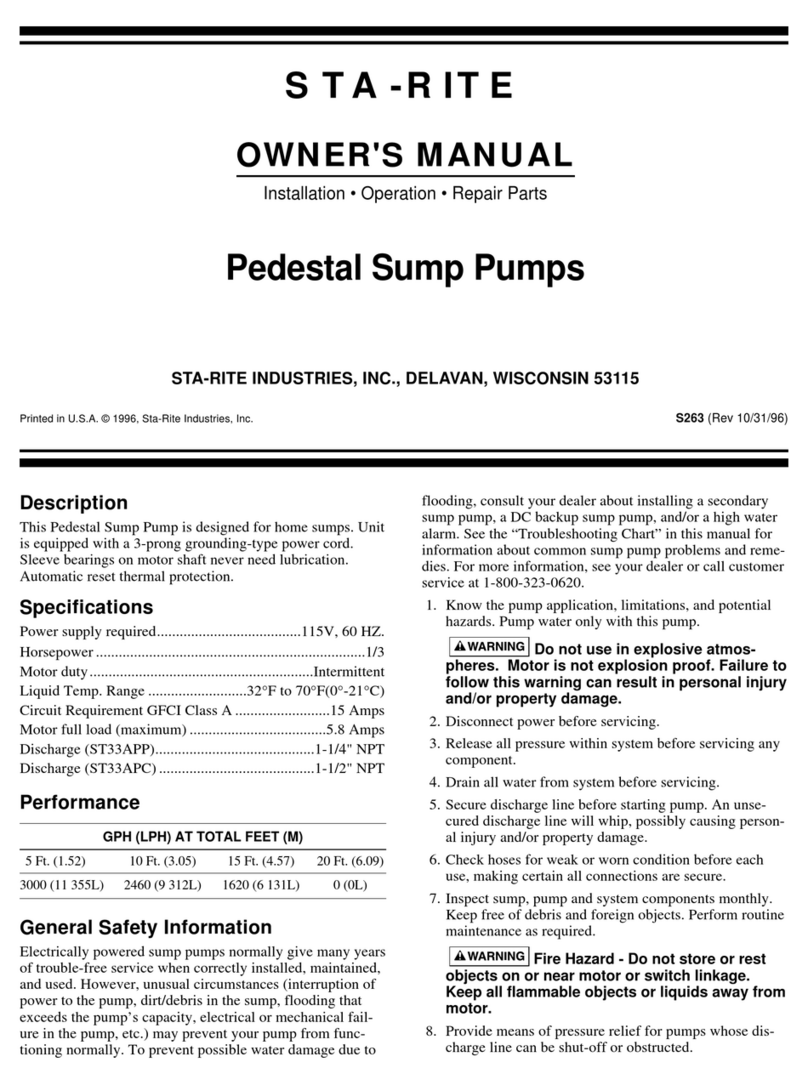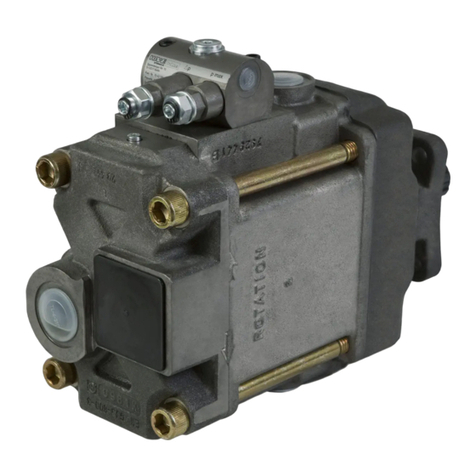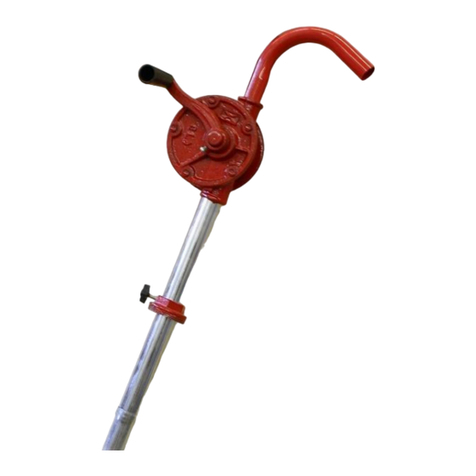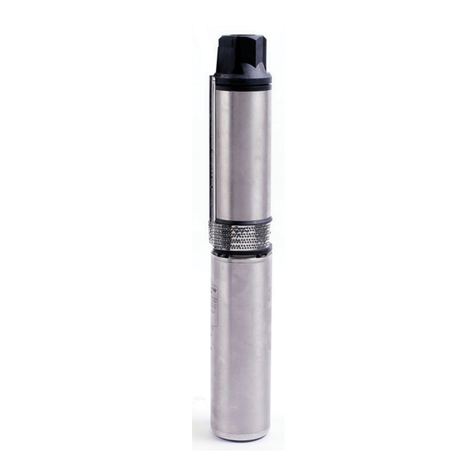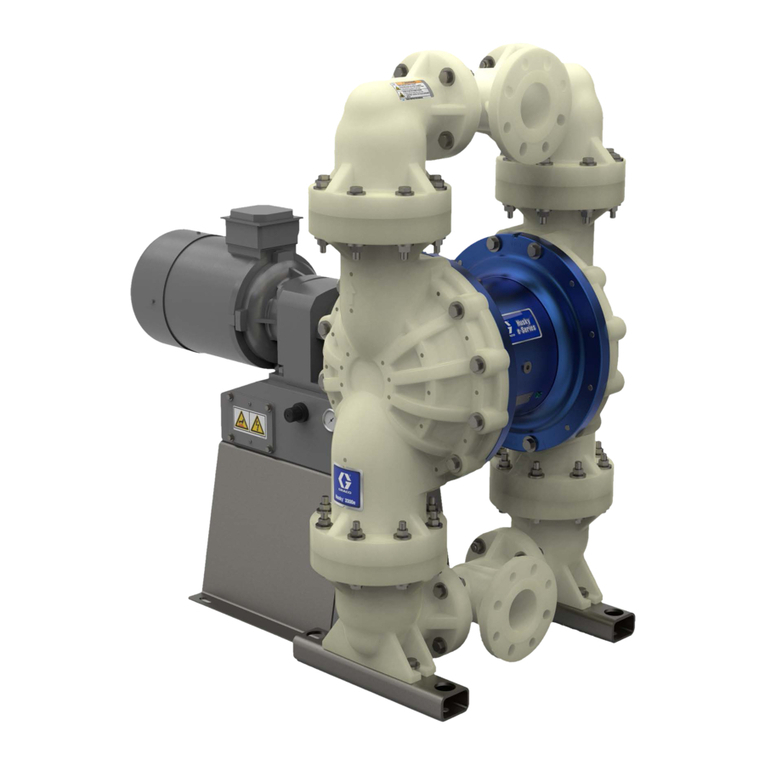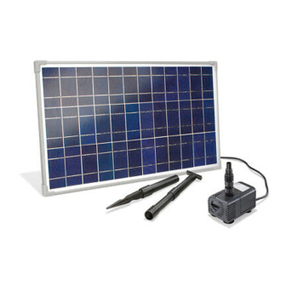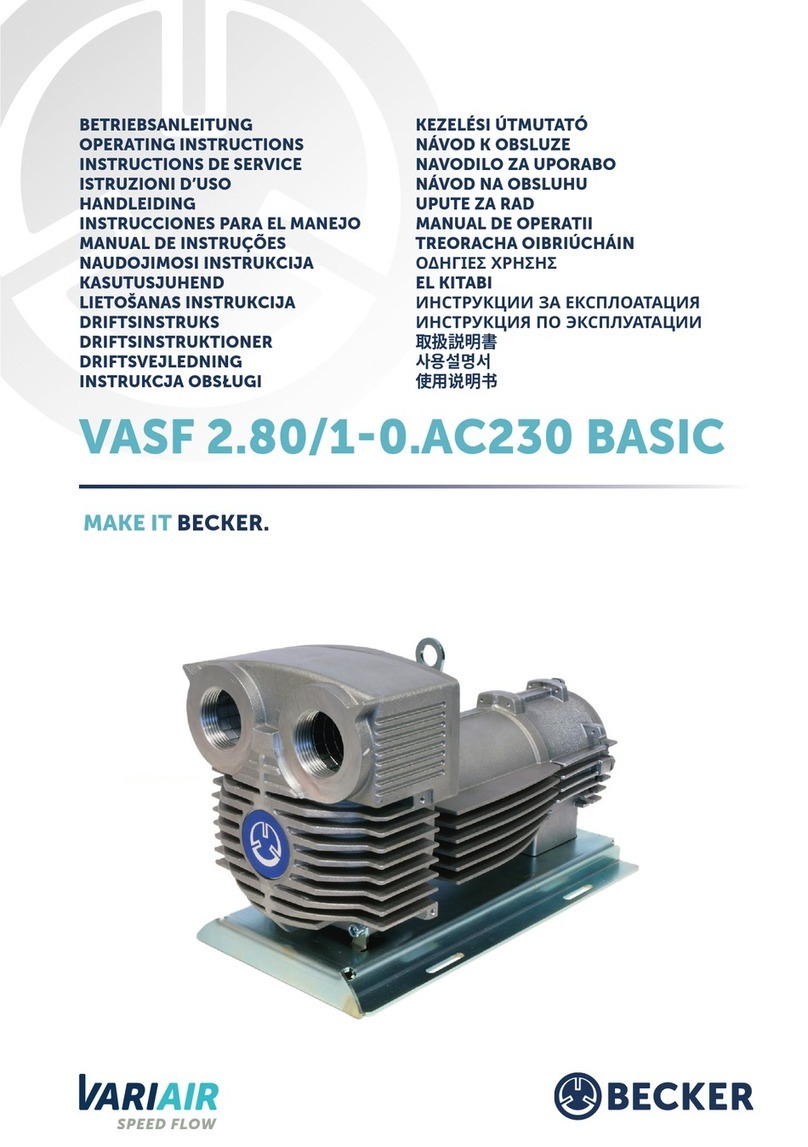
2
Finally, remember that high pressure opera-
tion in a pump system has many advantages.
But, if it is used carelessly and without
regard to its potential hazard, it can cause
serious injury.
INSTALLATION INSTRUCTIONS
IMPORTANT OPERATING CONDITIONS
Failure to comply with any of these
conditions invalidates the warranty
1. Prior to initial operation, add oil to crankcase so
that oil level is between the two lines on the oil dip-
stick. DO NOT OVERFILL.
SAE 80 or SAE 90 Industrial
Gear Oil may be used. (Giant p/n 01154)
Caution! When operating in damp places or with high
temperature uctuations, the oil must be changed im-
mediately should condensate (frothy oil) occur in the
gear box.Crankcase oil should be changed after the
rst 50 hours of operation, then at regular intervals of
500 hours or less depending on operating conditions.
Installation of the Giant Industries, Inc., pump is
not a complicated procedure, but there are some
basic steps common to all pumps. The following
information is to be considered as a general out-
line for installation. If you have unique require-
ments, please contact Giant Industries, Inc. or
your local distributor for assistance.
1. The pump should be installed at on a base to a
maximum of a 15 degree angle of inclination to en-
sure optimum lubrication.
2. The inlet to the pump should be sized for the ow
rate of the pump with no unnecessary restrictions that
can cause cavitation. Teon tape should be used to
seal all joints. If pumps are to be operated at temper-
atures in excess of 1400F, it is important to insure a
positive head to the pump to prevent cavitation. Keep
NPSH must be observed. Make sure that suction
pulsation is suciently dampened - water column
resonance must be avoided.
3. The discharge plumbing from the pump should be
properly sized to the ow rate to prevent line pres-
sure loss to the work area. It is essential to provide a
safety bypass valve between the pump and the work
area to protect the pump from pressure spikes in the
event of a blockage or the use of a shut-o gun.
4. Use of a dampener is necessary to minimize pul-
sation at drive elements, plumbing, connections, and
other system areas.
The use of a dampener with Giant Industries, Inc.
pumps is optional, although recommended by Giant
Industries, Inc. to further reduce system pulsation.
Dampeners can also reduce the severity of pressure
spikes that occur in systems using a shut-o gun. A
dampener must be positioned downstream from the
unloader.
5. Crankshaft rotation on Giant Industries, Inc.
pumps should be made in the direction designated
by the arrows on the pump crankcase. Reverse
rotation may be safely achieved by following a few
guidelines available upon request from Giant Indus-
tries, Inc. Required horsepower for system opera-
tion can be obtained from the chart on page 3.
6. Before beginning operation of your pumping
system, remember: Check that the crankcase and
seal areas have been properly lubricated per recom-
mended schedules. Do not run the pump dry for
extended periods of time. Cavitation will result in
severe damage. Always remember to check that all
plumbing valves are open and that pumped media
can ow freely to the inlet of the pump.
Important! If there is a danger of frost, the wa-
ter in the pump and in the pump ttings (particularly
the unloader valve) must be emptied. The second
discharge port can also be used and the pump run
“dry” for 1-2 minutes for this purpose.
2. Pump operation must not exceed rated pressure,
volume, or RPM. A pressure relief device must be
installed in the discharge of the system.
3. Acids, alkalines, or abrasive uids cannot be
pumped unless approval in writing is obtained before
operation from Giant Industries, Inc.
4. Run the pump dry approximately 10 seconds
to drain the water before exposure to freezing tem-
peratures.
